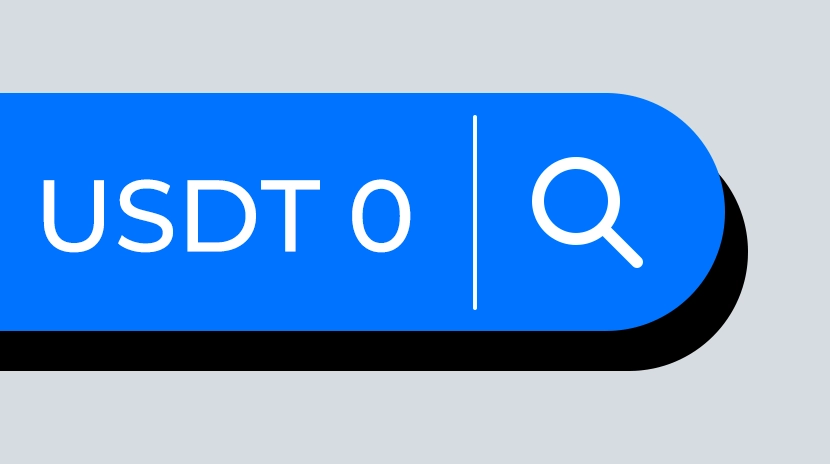Stablecoin Weekly Report No. 3: Saying Goodbye to "Passive Earnings," Stablecoin Giants Explore Profit Models Beyond Treasury Bonds
Market competition intensifies as traditional finance enters the arena and yield-bearing stablecoins rise. Tether and Circle explore “Plan B,” while Coinbase pushes for “on-chain interest” reforms.
Global payments are undergoing a revolution, and stablecoins are at the heart of this transformation. They are reshaping cross-border transactions and redefining the future of payments. Cobo is at the forefront of this revolution. It is building the next generation of stablecoin payment solutions that cover wallet infrastructure, risk compliance, and yield-generating financial solutions—an all-in-one stablecoin infrastructure.
By choosing Cobo, entrepreneurs can focus on product innovation and user growth, thus quickly entering the wave of stablecoin financial innovation.
Dear readers,
Welcome to the third edition of Stablecoin Weekly! This week’s report will dive deep into the rapidly transforming stablecoin market.
For a long time, stablecoin issuers relied mainly on income generated from holding reserve assets pegged to fiat currencies, such as U.S. Treasury bonds. However, this traditional profit model is facing serious challenges. The uncertainty of high interest rates, increasing market competition, and users’ demand for yield are making it difficult to continue relying solely on interest from reserves.
In the face of this transformation, key players in the market are exploring different growth paths. Stablecoin giant Tether has chosen an aggressive diversification strategy. It actively transitions into an investment holding company and expands into agriculture, media, sports, and even frontier technologies. Tether has also strategically invested some profits into digital assets like Bitcoin. In 2024, Tether achieved over $13 billion in profits, which provided a solid foundation for its diversification strategy.
Circle, on the other hand, is focusing on strengthening its core business and technology infrastructure, such as launching the USDCKit SDK to simplify payment integrations and preparing for an IPO. Circle seems to focus on a clearer regulatory environment, particularly regarding “on-chain interest.” Coinbase CEO Brian Armstrong recently publicly called for legislative reforms to allow reserve interest to be directly distributed to holders.
Notably, the rise of yield-bearing stablecoins is increasing competitive pressure on traditional stablecoins. JPMorgan expects the market share of yield-bearing stablecoins to grow significantly. Meanwhile, traditional financial institutions like Northern Trust, ICE, and Mastercard are entering the market to explore the application of stablecoins and tokenized assets.
As Artichoke Capital’s Shawn pointed out, stablecoins are similar to money market funds (MMFs), and their ultimate value will depend on their practical use cases, such as cross-border payments, DeFi, and the broader digital economy.
The current stablecoin market is in a critical transformation period. Interest-driven traditional profit models are being re-evaluated, and diversification, technological innovation, and practical applications will be the key to future competition. This edition of the newsletter will delve into these trends and developments to offer more insights.
Focus Insights
🎯 Stablecoins as the Money Market Funds (MMFs) of the Digital World
Shawn from Artichoke Capital offers an insightful comparison in his article Stablecoins and the parallels with Money Market Funds, suggesting that stablecoins are like the money market funds (MMFs) of the digital world. This analogy perfectly captures the commonality between these two financial tools in solving similar problems across different eras.
In the early 1970s, the U.S. financial system had a clear efficiency gap: checking accounts did not earn interest, and corporate savings options were limited. The market needed a solution, and thus MMFs were born. They provided businesses with an efficient way to manage cash, bypassing outdated banking regulations.
Today, MMFs hold over $7.2 trillion in assets and have become a cornerstone of the financial system.
History is repeating itself with stablecoins. Stablecoins address similar pain points in the digital economy and serve as a digital version of the dollar. Most stablecoins are pegged to the dollar, naturally extending the influence of the U.S. dollar into the global digital space.
Like MMFs, stablecoins maintain a relatively stable value and serve as tools for holding idle funds. However, the key difference is that stablecoins are based on blockchain technology, making them permissionless—anyone with a cryptocurrency wallet can hold and trade stablecoins.
The concerns facing stablecoins today—systemic risks, regulatory arbitrage, and their impact on traditional banking—are strikingly similar to the challenges faced by MMFs in their early days. History has shown that financial innovations that solve real-world problems ultimately find the right regulatory framework.
The true potential of stablecoins lies in their role as digital dollars and in the infrastructure they provide for decentralized finance (DeFi). Stablecoins can be seen as the circulatory system of DeFi.
In the short term, stablecoins may primarily serve retail users and regions outside the U.S., especially those with inefficient traditional financial systems. Over the long term, platforms with large user bases will play a decisive role in driving adoption.
Financial history shows that when new tools address fundamental needs more efficiently, adoption tends to occur faster and more widely than expected. It’s important to note that we shouldn’t only focus on Bitcoin—stablecoins might be crypto’s most profound contribution to traditional finance.
🎯 Beyond Treasury Bonds: Tether’s Diversification Strategy
Stablecoin giant Tether is undergoing a strategic transformation. Known for issuing the USDT stablecoin pegged to the U.S. dollar, the company is now actively expanding into diversification outside of its core business. This move is not accidental but a response to the limitations of its current business model and the growing market competition.
For a long time, Tether primarily profited from the income generated by its massive USDT reserve assets (currently over $140 billion, including more than $113 billion in U.S. Treasury bonds). However, this model has inherent growth ceilings. Relying solely on Treasury bond interest income is no longer sustainable, especially in the face of future interest rate fluctuations and uncertain macroeconomic conditions. Additionally, regulatory pressures limit Tether’s ability to share reserve profits directly with USDT holders. This puts it at a disadvantage compared to traditional financial institutions.
Meanwhile, the rise of yield-bearing stablecoins is creating increasing competition for Tether. These stablecoins, which offer interest returns to holders, are expected to capture a significant portion of the market share, with JPMorgan predicting their share to grow from 6% to 50%. This poses a major challenge to traditional stablecoins like USDT, which cannot offer similar returns.
To address this challenge, Tether is actively seeking new growth engines, with a clear diversification strategy that spans multiple industries:
Increasing its stake in Latin American agriculture company Adecoagro (AGRO) to 70%. This is seen as a strategic move into the real economy and diversified asset allocation.
Acquiring a stake in Italian media company Be Water, aiming to explore digital content and emerging technologies.
Purchasing a minority stake in Italian football club Juventus FC, attempting to integrate digital assets with the sports industry and expand its brand influence.
Large investments in video platform Rumble and brain-computer interface company Blackrock Neurotech. This reflects its interest in frontier technologies and innovation.
These diversification efforts aim to reduce business risk, decrease dependence on single stablecoin issuance and reserve management, and open up new, potentially higher-return profit avenues. All this ensures the company’s long-term sustainability. Notably, Tether achieved over $13 billion in profits in 2024, which provides a solid financial foundation for its aggressive diversification strategy.
🎯 Stablecoins Should Earn Interest: Coinbase CEO Calls for Legislative Reform
In his article “Unlocking On-Chain Interest is a Win-Win,” Coinbase CEO Brian Armstrong argues that the U.S. should amend stablecoin legislation to allow consumers to earn interest from the reserve assets, just like traditional bank accounts. The current legal framework is outdated, artificially limiting the potential of stablecoins and causing harm to ordinary consumers and the U.S. economy.
Stablecoins are typically 1:1 backed by fiat currencies like the U.S. dollar, with issuers investing these reserve assets in low-risk instruments like short-term U.S. Treasury bonds. The interest generated is usually kept by the issuer. The core idea of “on-chain interest” is to directly distribute the interest earned from these reserves to stablecoin holders, similar to an interest-bearing checking account.
However, regulatory barriers have hindered this natural flow. The main reason is that existing laws have not kept pace with technological development. Unlike traditional interest-bearing checking and savings accounts, stablecoins currently do not enjoy the same exemptions under securities laws, making it difficult to pay interest to users. New stablecoin legislation should be created to remove obstacles and allow regulated stablecoins to offer interest directly to consumers, enabling them to function like ordinary savings accounts without excessive disclosure and tax implications.
Why this change is crucial:
U.S. consumers could earn close to market rates (4.75%) instead of the meager returns of bank accounts (0.41%).
The unbanked worldwide could access the stability and yield of the U.S. dollar with just a mobile phone.
Strengthening the dollar’s role and attracting global users into the U.S. dollar ecosystem.
The current barriers are simply due to regulatory lag—traditional checking accounts can pay interest, and regulated stablecoins should receive the same treatment.
Regulation & Compliance
🏛️UK Financial Regulator to Issue Formal Licenses for Crypto Firms Starting 2026
Key Points:
The UK Financial Conduct Authority (FCA) plans to begin issuing formal licenses to crypto firms next year, following industry consultations and the rollout of new rules.
Hundreds of firms previously failed to secure registration under the FCA’s temporary regime; the upcoming framework will be stricter and more comprehensive.
Why It Matters:
This marks a shift from temporary registration to a full licensing regime in the UK. It offers clear compliance pathways for stablecoin issuers and exchanges.
While the bar for entry will be raised, compliant firms will benefit from a more stable and predictable operating environment.
Product Launches
👀Circle Releases USDCKit SDK to Simplify USDC Payments and Automation
Key Points:
Circle has launched USDCKit, a developer SDK that streamlines USDC payments, automates workflows, and strengthens compliance across Circle Wallets.
By offering prebuilt, intuitive tools, USDCKit reduces integration complexity and enables businesses to scale USDC payments more efficiently.
Why It Matters:
As stablecoin payments gain traction, USDCKit gives developers scalable tools to focus on product building rather than infrastructure.
Tailored for PSPs and cross-border remittance platforms, the SDK supports high throughput, automated fund flows, cross-chain USDC transfers, and improved compliance—cutting both operational costs and time-to-market.
👀Northern Trust to Provide Custody and Cash Management for Trade Finance Stablecoin Issuer Haycen
Key Points:
Financial giant Northern Trust will offer custodial and cash services to Haycen, a stablecoin issuer focused on trade finance.
Haycen provides stablecoin-based solutions for non-bank lenders in global trade and is backed by UK government funding.
Why It Matters:
Highlights growing institutional confidence in stablecoin use cases within trade finance—a sector ripe for modernization.
With global trade finance still relying heavily on manual workflows, Haycen’s solution offers real-time settlement and reduced friction for cross-border transfers in a $2T+ market.
👀 ICE (Parent of NYSE) to Explore Circle’s USDC and Tokenized Funds for New Financial Products
Key Points:
ICE plans to explore use cases for USDC and tokenized money market fund USYC across its derivatives exchange, clearinghouses, and other platforms.
This is part of a broader trend among US financial institutions integrating stablecoins and tokenized assets amid improving regulatory clarity.
Why It Matters:
Reflects accelerating TradFi adoption of blockchain and digital asset infrastructure.
A key milestone in the convergence of traditional finance (TradFi) and decentralized finance (DeFi), driven by regulatory progress.
👀USD₮0 Goes Live on Unichain, Enhancing DeFi Efficiency
Key Points:
USD₮0, a cross-chain variant of the world’s largest stablecoin USD₮, is now live on Unichain.
Unichain users benefit from lower slippage, reduced fees, faster trades, and more efficient capital allocation.
USD₮0 is deployed under the ERC-7802 standard, ensuring consistency across the broader Superchain network.
Stargate Finance enables access to USD₮ liquidity across other rollups and protocols in the Superchain ecosystem via bridged USD₮0.
👀Mastercard Building Blockchain-Powered Network to Become the “Venmo of Crypto”
Key Points:
Mastercard is expanding its blockchain and crypto capabilities to better serve consumers and financial institutions.
It aims to replicate its traditional card network model on-chain, enabling seamless digital asset payments. Its “multi-token network” initiative includes partnerships with JPMorgan and Standard Chartered.
Why It Matters:
- This move aims to streamline capital flows between traditional finance and decentralized finance, bridging gaps in compliance frameworks and user experience. It positions Mastercard as a key infrastructure provider in the crypto space, potentially establishing competitive moats similar to those in traditional payments.
- As the regulatory landscape becomes clearer and traditional financial institutions show growing interest in digital assets, Mastercard’s strategic positioning stands to benefit from industry growth and may help drive broader adoption of digital assets.
Market Adoption
🌱Ethereum-Based Stablecoin Supply Hits All-Time High, Surpasses $132.4B
Key Points:
Ethereum’s total stablecoin supply has reached a new record, surpassing $132.4B for the first time in nearly three years.
In the past day alone, supply increased by $321M; over the last month, it rose by nearly $2.8B.
Global stablecoin market cap now exceeds $200B: USDT leads with $142B, followed by USDC at $49B.
Ethereum accounts for 58% of all stablecoins, followed by Tron (31%) and BNB Chain (3%).
🌱Tokenized Treasuries See Over 500% YoY Growth, Yet Still Only 2% of Stablecoin Market
Key Points:
The market cap of tokenized US Treasuries surged from $800M to $5.2B—growing by $1B in just two weeks, driven by offerings from BlackRock and Securitize.
While stablecoin issuers like Tether benefit from reserve yields, passing yields to users triggers stricter regulatory obligations.
Regulatory uncertainty and complex compliance rules are key barriers to the wider adoption of tokenized government debt.
🌱Ripple Partners with Chipper Cash to Enhance African Payments via XRP
Key Points:
Ripple has teamed up with Chipper Cash to leverage XRP and Ripple Payments for cross-border transactions in Africa.
Chipper Cash serves 5 million users across nine countries; the integration allows for 24/7 global remittances.
XRP’s role as a global payments bridge is further reinforced—helping address inefficiencies and high costs in Africa’s legacy systems.
🌱Tokenized Gold Hits All-Time High of $1.4B Market Cap and $1.6B in Volume
Key Points:
Tokenized gold has reached $1.4B in market cap and $1.6B in 24h volume, led by Tether’s XAUT ($749M) and Paxos’ PAXG ($653M). Physical gold prices surpassing $3,000/oz have fueled demand.
The broader stablecoin market hit $231B after 18 months of consistent growth. USDT’s dominance is declining (62.1%), while USDC surged 7% to nearly $60B.
Ethena’s USDtb attracted over $1B in assets, ranking it the 8th largest stablecoin. The MiCA framework is spurring euro stablecoin growth; Circle’s EURC rose 30% to $157M, now commanding 45% of the euro stablecoin market.
Tokenized gold reflects rising demand for safe-haven assets.
The stablecoin market is becoming increasingly diversified, as regional dynamics and compliance with the MiCA framework open up new opportunities.
Capital Moves
💰Tether Boosts Stake in Latin American Agribusiness Adecoagro to 70%
Key Points:
Tether increased its ownership in Adecoagro from 51% to 70%, acquiring shares at $12.41 apiece. The stock rose 7% pre-market to $11.95.
Tether also invested €10M for a 30.4% stake in Italian media company Be Water.
Why It Matters:
Highlights Tether’s strategic diversification beyond crypto, targeting sustainable, yield-generating sectors.
Diversified exposure strengthens Tether’s global positioning and may attract more interest from traditional investors.
💰Circle Taps Investment Banks to Advance IPO Plans, Aiming for Late-April Filing
Key Points:
USDC’s market cap—once over $50B before the SVB crisis—has rebounded to around $60B. However, Circle’s revenue is heavily reliant on interest income.
Circle’s valuation has dropped from $9B in February 2022 to roughly $5B in secondary markets; the IPO is targeting a $4–5B valuation.
Why It Matters:
Circle’s IPO will test investor confidence in stablecoin business models, especially given its reliance on interest-based income (99% of total revenue).
Ongoing stablecoin legislation in the US offers Circle a potential tailwind by creating a clearer regulatory environment.
As competition in the stablecoin sector heats up with increasing participation from both crypto firms and traditional financial institutions, Circle faces growing pressure to showcase its business diversification capabilities to maintain investor confidence.
💰Tether Adds 8,888 Bitcoins in Q1, Total Holdings Reach 92,646 BTC
Key Points:
Tether acquired 8,888 BTC in Q1 2025 at $735M.
Tether currently holds over 92,647 BTC—worth around $7.8 billion—as part of its ongoing strategy, launched in May 2023, to invest 15% of quarterly profits into Bitcoin reserves.
Disclaimer:
This article is reprinted from [Substack]. The copyright belongs to the original author [Stable Weekly]. If you have any objections to the reprint, please contact the Gate Learn team. The team will handle it as soon as possible according to relevant procedures.
Disclaimer: The views and opinions expressed in this article represent only the author’s personal views and do not constitute any investment advice.
Other language versions of the article are translated by the Gate Learn team. The translated article may not be copied, distributed or plagiarized without mentioning Gate.com.
Related Articles

In-depth Explanation of Yala: Building a Modular DeFi Yield Aggregator with $YU Stablecoin as a Medium

What is Stablecoin?

Top 15 Stablecoins

A Complete Overview of Stablecoin Yield Strategies

Stripe’s $1.1 Billion Acquisition of Bridge.xyz: The Strategic Reasoning Behind the Industry’s Biggest Deal.


